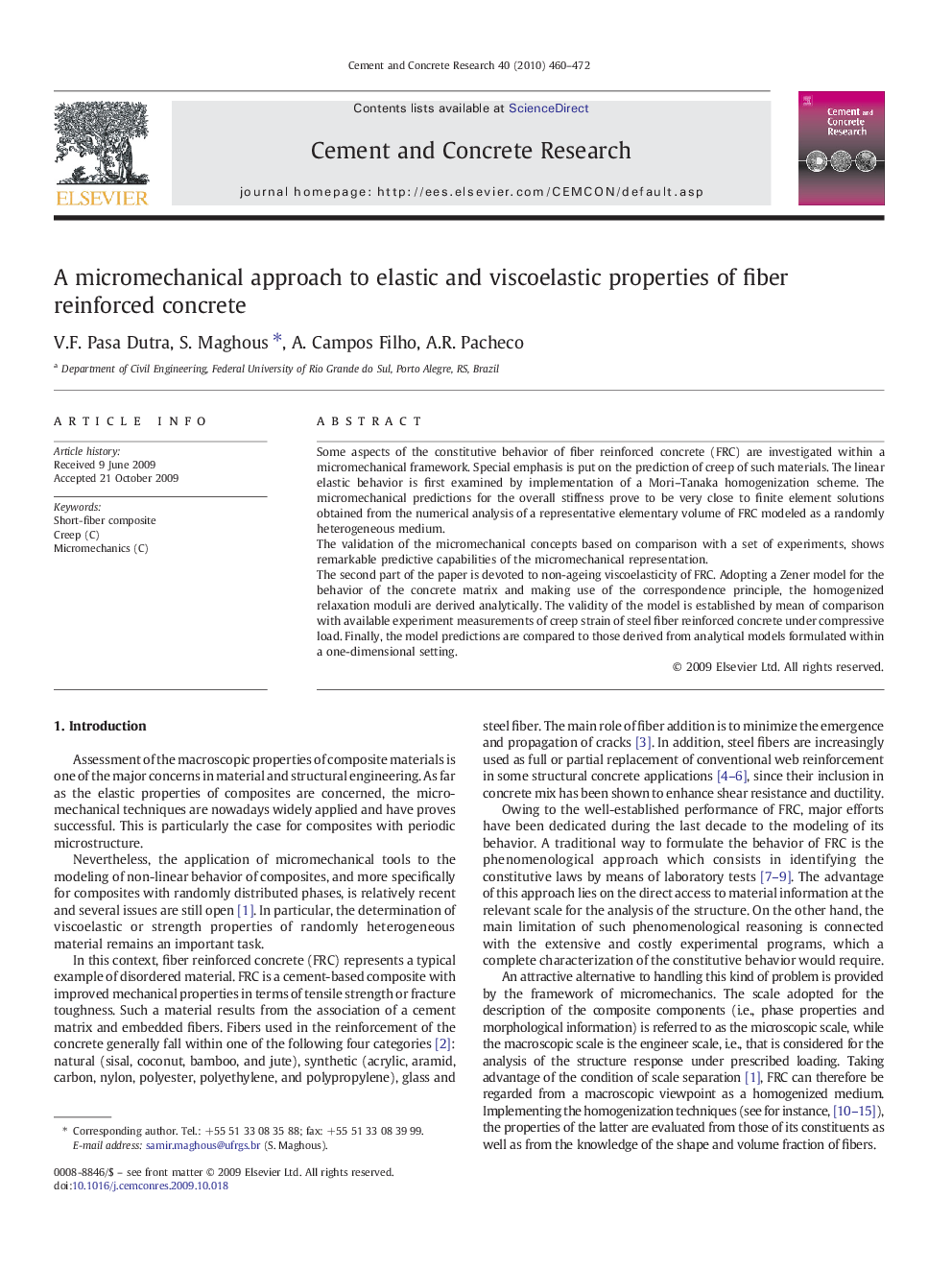| Article ID | Journal | Published Year | Pages | File Type |
|---|---|---|---|---|
| 1457018 | Cement and Concrete Research | 2010 | 13 Pages |
Some aspects of the constitutive behavior of fiber reinforced concrete (FRC) are investigated within a micromechanical framework. Special emphasis is put on the prediction of creep of such materials. The linear elastic behavior is first examined by implementation of a Mori–Tanaka homogenization scheme. The micromechanical predictions for the overall stiffness prove to be very close to finite element solutions obtained from the numerical analysis of a representative elementary volume of FRC modeled as a randomly heterogeneous medium.The validation of the micromechanical concepts based on comparison with a set of experiments, shows remarkable predictive capabilities of the micromechanical representation.The second part of the paper is devoted to non-ageing viscoelasticity of FRC. Adopting a Zener model for the behavior of the concrete matrix and making use of the correspondence principle, the homogenized relaxation moduli are derived analytically. The validity of the model is established by mean of comparison with available experiment measurements of creep strain of steel fiber reinforced concrete under compressive load. Finally, the model predictions are compared to those derived from analytical models formulated within a one-dimensional setting.
